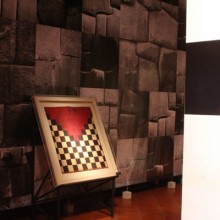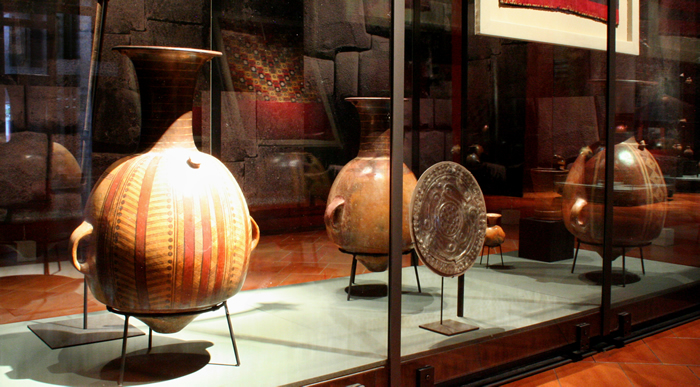
Maka: Cántaro-aribalo con motivo de "helecho".Cerámica .lnka,Perú.
MNAAHP,M-040400.

Maka: Cántaro-aribalo con motivo de "helecho".Cerámica .lnka,Perú.
MNAAHP,M-040400.
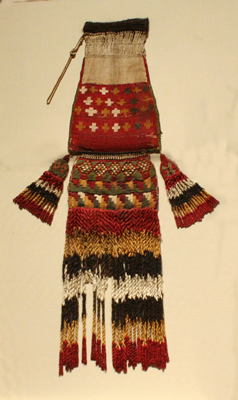
Chuspa: Bolsa ceremonial con borlas y flecos .Fibra de camélido.lnka,Perú.
MNAAHP,RT-1321.

Diadema ,orejeras y pectoral de plata.lnka,Perú.MNAAHP ,M-1314,M-6523/6254,
M-7070 .
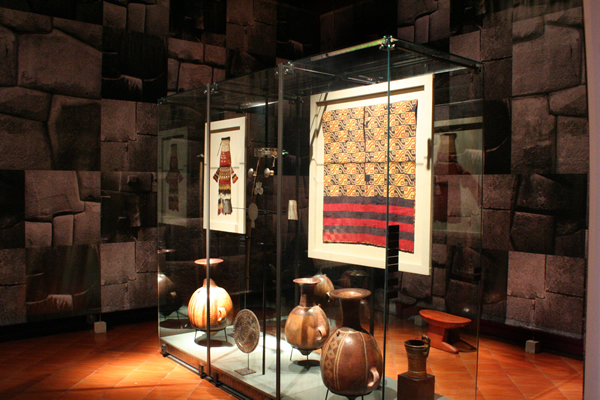
Unku: Túnica con tokapu "Llave lnka".Fibra de camélido .lnka,Perú.
MNAAHP,RT-22053 .
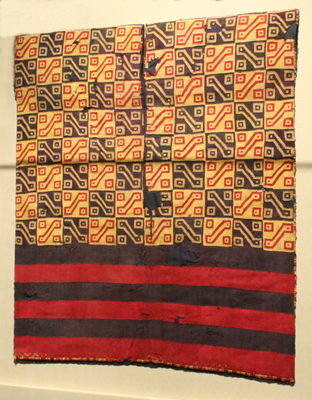
Unku: Túnica con tokapu "Llave lnka".Fibra de camélido .lnka,Perú.
MNAAHP,RT-22053 .
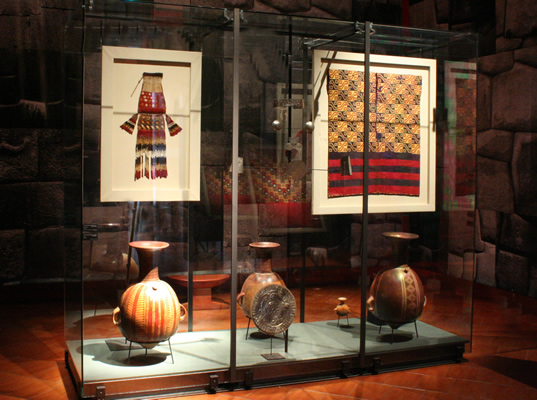
Unku: Túnica con tokapu "Llave lnka".Fibra de camélido .lnka,Perú.
MNAAHP,RT-22053 .

Unku: Túnica con tokapu "Llave lnka".Fibra de camélido .lnka,Perú.
MNAAHP,RT-22053 .
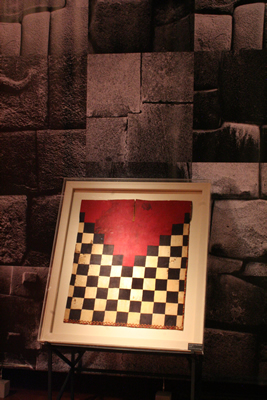
Unku: Túnica con tokapu "Llave lnka".Fibra de camélido .lnka,Perú.
MNAAHP,RT-22053 .
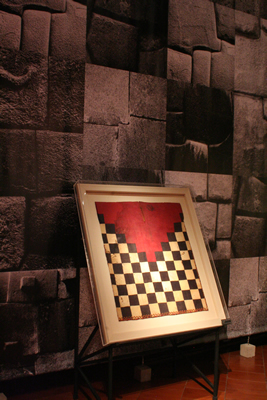
Unku: Túnica con tokapu "Llave lnka".Fibra de camélido .lnka,Perú.
MNAAHP,RT-22053 .
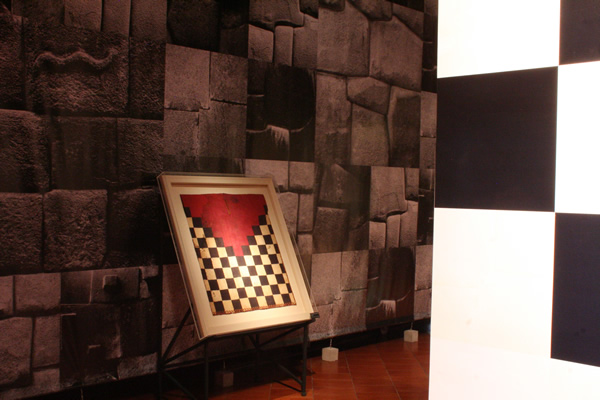
Unku: Túnica con tokapu "Llave lnka".Fibra de camélido .lnka,Perú.
MNAAHP,RT-22053 .

Chuspa: Bolsa ceremonial con borlas y flecos .Fibra de camélido.lnka,Perú.
MNAAHP,RT-1321.
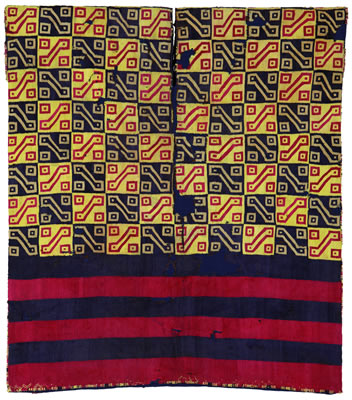
Unku: Túnica con tokapu "Llave lnka".Fibra de camélido .lnka,Perú.
MNAAHP,RT-22053 .
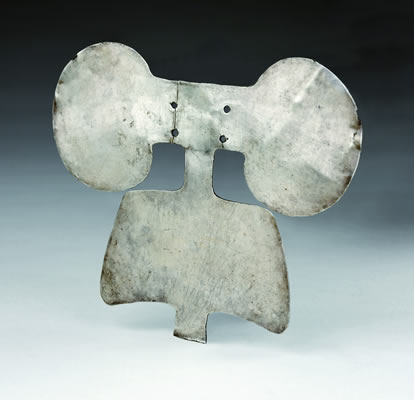
Ornamento de tocado o pectoral de plata. lnka, Perú. MNAAHP , M-7070.

El asentamiento de Machu Picchu en el corazón del
imperio.
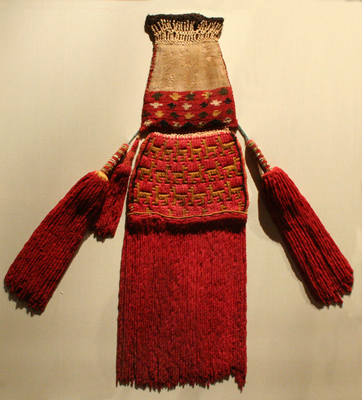
Chuspa: Bolsa ceremonial con borlas y flecos .Fibra de camélido.lnka,Perú.
MNAAHP,RT-1321.

Maka: Cántaro-aribalo con rombos y cruces. Cerámica. lnka,Perú. MLP,ML-026638.
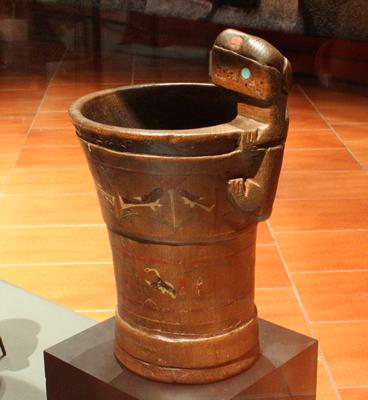
Quero: Vaso policromado con felino. Madera. lnka, Perú.MNAAHP,M-10388.
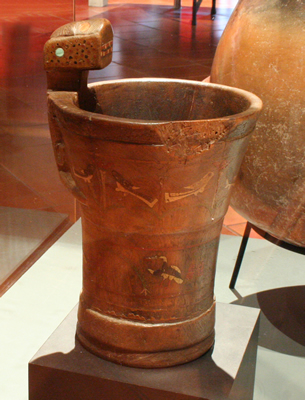
Quero: Vaso policromado con felino. Madera. lnka, Perú.MNAAHP,M-10388.
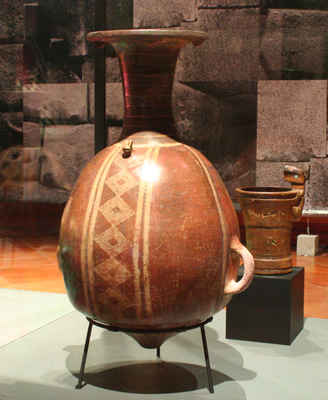
Maka: Cántaro-a ribalo con motivo de rombos.Cerámica .
lnka,Perú.MNAAHP,M-040409.
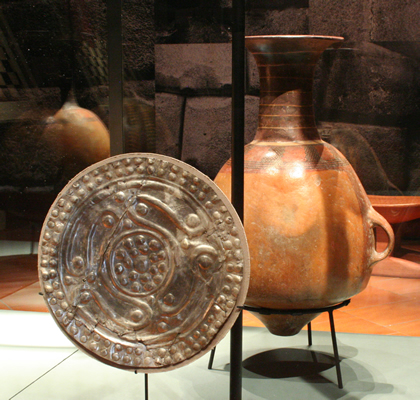
Disco repujado de plata.lnka,Perú.Colección MNAAHP,M-4638.
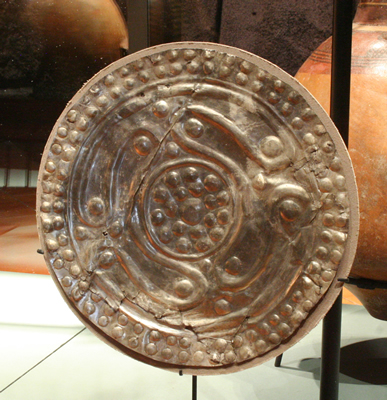
Disco repujado de plata.lnka,Perú.Colección MNAAHP,M-4638.
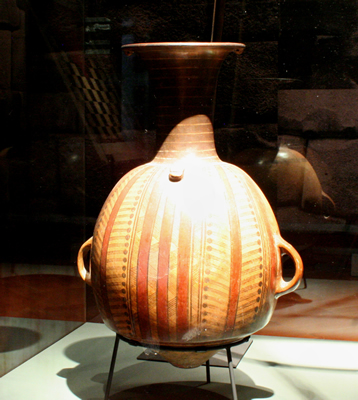
Maka: Cántaro-aribalo con motivo de "helecho".Cerámica. lnka,Perú.MNAAHP,M-040400.
The Inkas began their conquests in the fifteenth century, and in less than a hundred years they had built an empire that stretched from southern Colombia to central Chile. The Inka state’s efficient organization could move troops, officials and goods over long distances and subdue outlying provinces by forging alliances with local chiefs and redistributing goods and services. The wealth they obtained was destined for the State, the official religion, and the ruling elite. Chile formed part of Collasuyu, the southern provinces of the Inka empire or Tawantinsuyu. As in other regions, here the Inkas established the mita, a system in which individuals were obliged to work for the State for set periods as a form of tribute (mitayo), returning afterwards to their everyday tasks This system allowed the Empire to enhance production in agriculture, mining, herding and handicrafts. In contrast, mitimaes were people moved from one region to another as punishment or for their special skills, such as weaving or pottery. Makas, aisanas, chuas and mancas were the Inka ceramic vessels most commonly found in the provinces, where they were used on a daily basis for transporting maize beer (chicha de maíz) and for cooking and serving food. These vessels were also used in ceremonies to compensate mitayos and mitimaes for their work.



























































